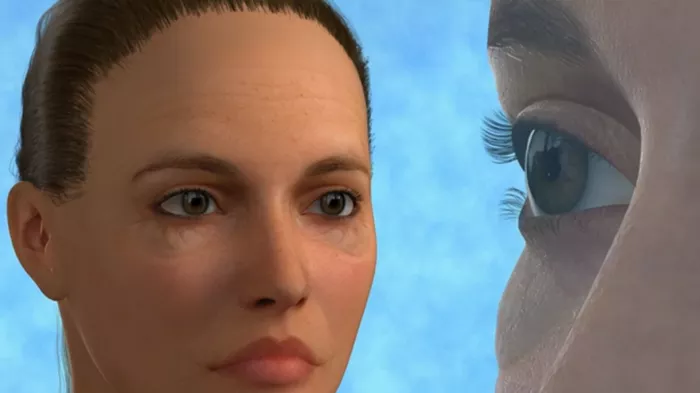Upper eyelid surgery, also known as upper blepharoplasty, is a popular cosmetic procedure that aims to rejuvenate the appearance of the eyes by removing excess skin and fat from the upper eyelids. If you’re considering upper eyelid surgery, you may be wondering how long it takes to heal and what to expect during the recovery process. In this article, we will explore the timeline for healing after upper eyelid surgery and provide insights into the recovery journey.
Understanding Upper Eyelid Surgery
Before discussing the healing process, let’s briefly understand the upper eyelid surgery procedure. Upper blepharoplasty involves the removal of excess skin and fat from the upper eyelids to address concerns such as droopy eyelids, puffiness, and a tired appearance. The surgery is typically performed under local anesthesia, and incisions are made along the natural creases of the eyelids, ensuring minimal scarring.
The Healing Process: What to Expect
Healing after upper eyelid surgery involves several stages, and the duration of each stage can vary from person to person. It is important to note that individual experiences may differ, and it is essential to follow your surgeon’s post-operative instructions for a smooth recovery. Here’s a general timeline of what to expect during the healing process:
1. Immediate Post-Operative Period (Days 1-2)
Immediately after the surgery, you will be monitored in a recovery area. You may experience some swelling, bruising, and mild discomfort during this time. Your surgeon may apply a cold compress to minimize swelling and provide you with pain medication to manage any discomfort. It is advisable to keep your head elevated while resting and avoid any strenuous activities.
2. First Week of Recovery (Days 3-7)
During the first week, you can expect some bruising and swelling to persist, although it gradually starts to improve. Your surgeon may recommend using cold compresses and applying prescribed ointments or eye drops to aid in the healing process. It is important to avoid rubbing or putting any pressure on the incision sites and to follow a gentle cleansing routine as instructed.
3. Second Week of Recovery (Days 8-14)
By the second week, most of the initial swelling and bruising should subside. However, it is not uncommon to experience some residual swelling, especially in the mornings or after extended periods of physical activity. Your surgeon may allow you to resume light activities but advise against strenuous exercises or activities that could strain the healing incisions.
4. Weeks 3-6: Continued Healing and Resolution of Swelling
During weeks 3 to 6, you will notice further improvement in the appearance of your eyelids as the remaining swelling continues to diminish. The incisions will gradually fade, although they may still be slightly pink or red. It is important to protect your eyes from the sun by wearing sunglasses and using sunscreen to prevent any discoloration or hyperpigmentation of the healing skin.
5. Months 2-3: Final Results and Full Recovery
By the end of the second month, you should be nearing the completion of the healing process, and the final results of your upper eyelid surgery will become more apparent. Any residual swelling should have resolved, and the incisions will continue to fade and blend with the natural creases of your eyelids. At this stage, most patients are able to resume their normal activities and enjoy the full benefits of the procedure.
Factors Affecting Healing Time
It is important to note that the timeline provided above serves as a general guideline, and individual healing experiences may vary. Several factors can influence the healing time after upper eyelid surgery, including:
1. Individual Healing Capacity: Each person’s body responds differently to surgery and heals at its own pace. Factors such as age, overall health, and genetics can impact the speed and quality of the healing process.
2. Surgical Technique: The specific technique used by your surgeon can also affect the recovery time. Advanced techniques that minimize trauma and use precise incisions may result in a shorter recovery period.
3. Post-Operative Care: Following your surgeon’s post-operative instructions diligently is crucial for optimal healing. This includes proper wound care, avoiding activities that strain the eyes, and attending all scheduled follow-up appointments.
4. Lifestyle and Habits: Certain lifestyle factors can impact healing. Smoking, for example, can delay the recovery process and increase the risk of complications. Maintaining a healthy lifestyle, including a balanced diet and regular exercise, can contribute to a faster and smoother recovery.
Consultation with Your Surgeon
If you are considering upper eyelid surgery, it is essential to consult with a qualified and experienced plastic surgeon. During the consultation, your surgeon will evaluate your specific needs, discuss the expected healing timeline, and provide personalized advice on post-operative care. They will address any concerns or questions you may have, ensuring you have a clear understanding of the recovery process.
In conclusion, the healing time for upper eyelid surgery varies from person to person, but a general timeline can be outlined. By understanding the stages of healing and following your surgeon’s instructions, you can promote optimal healing and achieve the desired results from your upper blepharoplasty. Remember, each individual’s healing journey is unique, and consulting with a skilled surgeon is crucial to receive personalized guidance and support throughout the recovery process.

